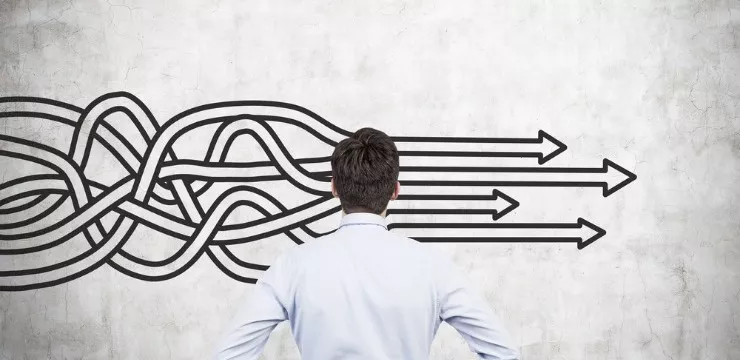
You’ve heard of the stages of change model, right? Otherwise known as the transtheoretical model. It was first developed by psychologists DiClemente and Prochaska. And it was designed to explain the process of changing lifestyle behaviors.
Over the years, businesses have used the stages of change model as a framework for managing organizational change. But does it actually work in a corporate setting?
The stages of change model takes a very individualistic approach to behavior change. Unlike other theories out there, like Kotter’s 8 step process. That’s a model that specifically addresses change at an organizational level.
So, can a model based on personal lifestyle changes be applied to a business environment?
That’s my first question. And my second is: can a model based on individual behavior change be applied to scenarios where multiple people are changing?
What is the stages of change model?
As a quick recap, this video by a Researcher at University of Birmingham explains the stages of change model.
Individuals are believed to pass through five stages when changing their behavior:
- Pre-contemplation
- Contemplation
- Preparation
- Action
- Maintenance
Understanding the different stages in the process can help us progress through them. For example, removing barriers to change can help motivate us to action.
The stages of change model in a business context
It’s much easier to be aware of these five stages when there’s a third party assisting us in the behavior change. This could be a psychologist or personal trainer, for example. In an organizational context however, this is the change manager.
In theory at least, we can see how the stages of change model can be applied to employee behavior change. It’s an individual assisting an individual. Just like in the cases of lifestyle behavior changes.
You, as change manager, could map out the employee’s five stages of change. You could then strategize the best way to progress that employee through the stages.
In fact, the stages of change model has been effective in transitions to entrepreneurialism.
“The benefits of entrepreneurship, self-efficacy, and entrepreneurial behaviour increased systematically along [the stages of change].” Flonek, Isidor & Kauffeld
This is also an individual making a professional change. There are clear synergies with managing a professional behavior change in a staff member.
The stages of change model for organizational change
But what about organizational change that involves many individuals changing at once?
We know from formal training and employee engagement exercises that one-on-one guidance is very different to group instruction. And there are so many change management techniques to master, do we really need another?
But there are scholars who maintain that the transtheoretical model can —
and should — be applied.
“The Transtheoretical Model has the potential to do for organizational change what it has done for individual behavior change.” Prochaska, Prochaska & Levesque
Most attempts at organizational change fail because the psychology of change is ignored (Winum, Ryterband, and Stephenson)
But the stages of change model gives organizations a psychological framework to follow. This has the potential to solve that problem.
Focus on the human aspect of organizational behavior is crucial. People are not just cogs in a machine. They are complex sentient beings.
And as a group, they can be difficult to manage.
Difficulty can arise when there is resistance within the group. Without strong support for the change and positive leadership, that resistance can grow.
Think of the resistance as bacteria. Left unchecked, it multiplies and multiplies. But an antibacterial agent will wipe it out, or at the very least stop it from spreading.
In this case, our antibacterial agent is the “guiding coalition” — a team of skilled and authoritative employees championing the change. This keeps the resistance at bay.
We musn’t ignore the complexity of group dynamics and organizational culture. Still, there’s no reason why the stages of change model can’t be applied successfully.
In fact, it’s already been applied (with success) to groups much larger than a corporate workforce.
“…this model has been tested in controlled experiments with entire populations to demonstrate that stage-matched interventions outperform action-oriented interventions.” Prochaska, Prochaska & Levesque
Conclusion
Fifteen years ago, organizational changeorganizational change theory was underdeveloped. Today, there is still some debate about what framework works best in organizational change scenarios.
Ultimately, whether the stages of change model works within your organization is a question you must answer. Give it a try. You might be surprised.
After all, the work of Prochaska, Prochaska & Levesque shows us that:
“Practically, the stages-of-change dimension can be applied by leaders to reduce resistance, increase participation, reduce dropout, and increase change progress among employees.”
These proposed benefits are appealing. So it’s worth your while trying to incorporate the model into your practices. If it works, the rewards are significant. And as they say: nothing ventured, nothing gained!
WalkMe Team
WalkMe spearheaded the Digital Adoption Platform (DAP) for associations to use the maximum capacity of their advanced resources. Utilizing man-made consciousness, AI, and context-oriented direction, WalkMe adds a powerful UI layer to raise the computerized proficiency, everything being equal.



